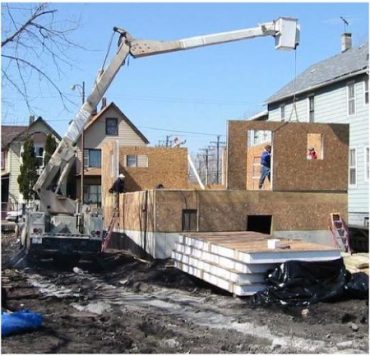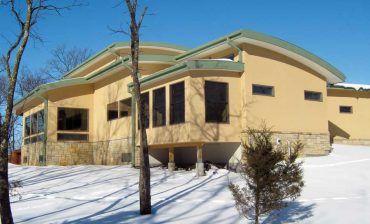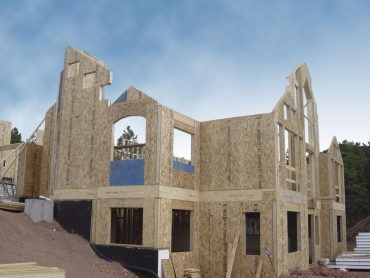
John Bleasby
The inevitability of residential prefabrication (Part 3)
Canadian ContractorStructural Insulated Panels (SIPs) may be the answer for the residential housing industry
“Globally, labor-productivity growth in construction has averaged only one percent a year over the past two decades, compared with growth of 2.8 percent for the total world economy and 3.6 percent in the case of manufacturing.” While this statement made in a McKinsey company report in 2017 applies to the construction industry in all forms, there is no reason to believe that the residential construction industry has performed any better than in large commercial or institutional work.
Where do we go from here?
Prefabrication or panelization appears to be the answer not only to efficiency growth in all construction. It may also be the answer to the three major issues confronting residential contractors over the next 10 years: an impending skilled labour shortage, Net Zero Energy requirements and associated costs, and housing affordability.
Our second installment looked at one evolutionary step that contractors can take — lumber frame panelization. It keeps workers in their comfort zone of framed construction but offers solutions to skilled trade shortages by being more efficient on site. These efficiencies can translate into cost saving, thus addressing the issue of housing affordability.
However, does wood frame panelization deals successfully with the Net Zero Energy requirements of the future? Wood framed panels still need to be insulated, thermal breaks established, and air leaks minimized.
The answer to all three issues may lie elsewhere, specifically with Structural Insulated Panels, or SIPs as they are commonly called.

A crew of three, a crane, and one-day assembly. That’s the on-site efficiency advantage of SIPs.
The insulation solution
SIPs are closed wall or roof panels made from a layer of expanded polystyrene foam core sandwiched between oriented strand board (OSB) or plywood skins. While the foam alone has little strength, when bonded to OSB or plywood, it magnifies the panel’s overall structural capacity. The added benefit of the foam, of course, is that it adds tremendous insulation to the wall or roof section.
Often the SIPs have no internal studding at all, although depending on the application and point loading, a variety of materials can be incorporated inside the panels themselves. In the case of most residential builds, this could be wood studs or light gauge steel.
Manufacturers claim heat loss reductions from 40 to 60 percent over wood-framed construction due to the SIPs airtight wall and roof characteristics. SIP assemblies offer higher effective thermal resistance than other construction methods, and an easy, efficient route to EnerStar, EnerGuide and R-2000 certification.
Quick assembly on site
SIPs can be factory-built fast, often delivered two to three weeks after the order is placed. The panels usually come in modules of 4 feet by 8 feet or greater with a thickness of 4 to 6 inches, depending on the type of panel and the insulation rating specified. Because of their inherent structural capacity, panels can be assembled to form exterior walls, floors or roofs with minimal additional framing. Homes assembled for SIPs can handle high wind and snow loads with less structural lumber than wood-framed construction, and offer more design flexibility for architectural features such as vaulted areas and modern open floor plans.
After assembly, the contractor need only deal the moisture control system, building wrap and siding on the exterior, and finished wall boarding on the inside. Since assembly of a full house takes a day for straight-forward designs, and only a few for more complex ones, the building is effectively closed-in even faster than a wood framed panelized home, a huge advantage given Canada’s changeable climate. Assembly crews of only three or four members plus a crane can get the job done. The efficiency gain is pretty obvious.

Custom homes of any design and shape can be assembled using SIPs
Do SIPs really save money?
Most manufacturers offer SIP panels that arrive on site not only cut to design specifications but with openings pre-cut and finished with window and door bucks, wire chases precut in the panels and panel-to-panel connections inserted where possible, plus fasteners, sealants, and panel sealing tape. There is no added insulation to be applied either in the walls or on the exterior. All this saves valuable time and reduces job site waste. There is less shrinkage of materials and less bowing in the walls versus a framed building. The finished assembly is much stronger and can withstand, for example, storms and high winds that can damage, knock out of square or even collapse an open, unfinished stud frame.
Like any new process, there is the issue of training a crew in a new technique and getting some assembly time under the belt. Some industry observers say four or five projects are required before the new systems run smoothly. That’s not unusual for a new system or approach. In terms of training, however, resistance can be high among individuals used to working in a certain way. A forward-thinking company can help the crews over that hurdle, as can those SIP manufacturers who offer on-site assistance for crew training and orientation.
While speedier assembly time can mean less labour cost on site, there is the higher cost of the SIPs themselves to consider. While wood framed panelization costs only slightly more than regular stick construction, SIPs are a bit more again. However, as explained in Part Two of this series, it is important to look at all aspects of the suite work before coming to any firm conclusions.

Openings for windows or doors can be done in the factory or on-site
Efficiency gains begin with the design process
Other factors to bear in mind include repeatability. It’s best if the home design accounted for SIP construction form the outset. Furthermore, building envelopes that share design elements, even in part, will benefit from reduced SIP production set up time for each job. While custom homes can certainly be built with SIPs, they not see the same benefit enjoyed by production homes.
It is also critical, as with any modularization process, that design and measurements be extremely accurate — garbage-in, garbage-out. Modifications required on site caused by measurements errors at the specification stage are a waste of time, and therefore money. However, unlike the cost and material variances that can occur when estimating a stick frame home, the predictability of a SIP paneled home can add to the project’s efficiency and cost control, thereby adding to profit potential.
There is obviously more to learn about both wood frame panelization and SIPs, but a call to a few manufacturers to explain your next project will shed light on the potential that might exist for your business in the future.
Review the first two parts of our series:
Part 1: The 3 factors that point to a dramatic change in the future of Canadian home building
Part 2: Wood frame panelization cuts time on the site, and more
Got feedback? Make your opinion count by using the comment section below,
or by sending an email to:
JBleasby@canadiancontractor.ca
Follow John on Instagram and on Twitter for notifications about his latest posts

![]()

Leave a Reply